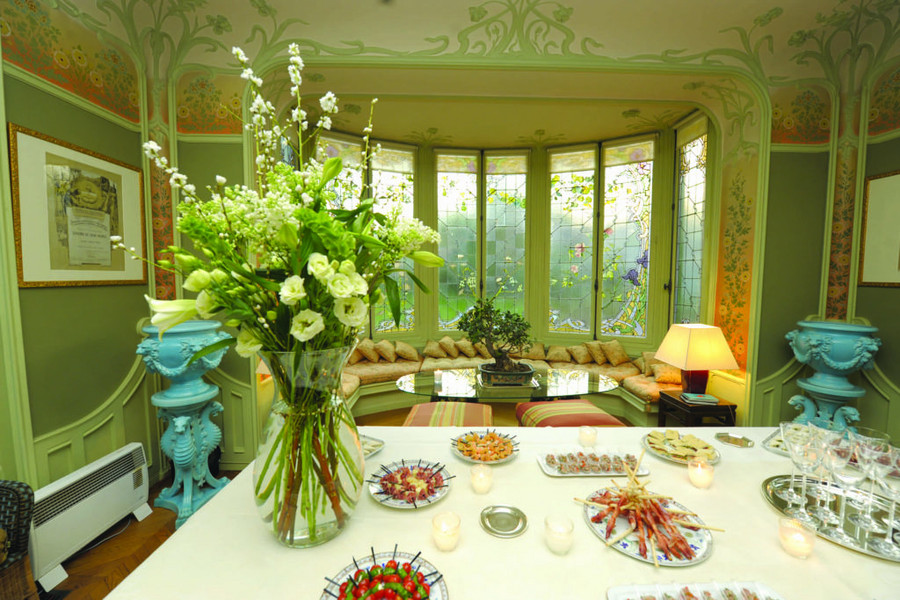

L'Art nouveau - L'Art déco
The main post office
Place Aristide Briand – Architect: J. Bukiet
This highly modern, resolutely symmetrical building stands on what was at the time an open site, allowing it to have a regular, homogenous layout that is entirely independent of its surroundings.
The main façade features nine large vertical windows that are encased in polished stone and adorned with ironwork. The light that rushes into the hall creates the overall impression, which is emphasised by the apertures above the side façades.
Beyond the design, the balance of the materials used - a magnificent combination of white, blond and brown - contributes to the overall sense of harmony. Furthermore, the interplay between the building's various levels, its projections and recesses, deftly combines unity with variety.
The entrance door of Fontaine school
4 rue H.-G. Fontaine

The entrance door to the boys' school in Asnières-sur-Seine, built in 1933, were embellished with stained glass.
Made in sandblasted glass by Pierre Lardin, using the same engraving technique as Jeannin, it depicts the attributes of the arts grouped around a profile of the goddess Athena. While a palette and a compass symbolise painting and architecture respectively, a map of Paris illustrates geography.
The bas-relief of the Abeille building
2 rue Sadi Carnot
Around 1920-1930
The building, emblazoned with a bee, was built by the famous insurance company of the same name.
A residence
16 avenue de la Marne
1907 – Architect: L. Varet
The architect Varet and the sculptor Lemit teamed up in the early years of the 20th century to build this beautiful residence, in keeping with the Art Nouveau style pioneered in France by the architect Hector Guimard (1867-1942).
The Art Nouveau salon in the Louis Vuitton family home
Around 1900
The first Vuitton house is now a museum, bringing together the brand's major pieces and the personal collections of the grandson of founder Gaston-Louis Vuitton (1883-1970).
You can discover some of the other residences highlighted in the dedicated guide by simply taking a stroll around the city.
Just looking up will reveal the magnificent façade of the homes and buildings, decorated with stylised geometric and plant designs, as well as the bow windows that were typical of the era, bringing light into the living spaces. These buildings are mainly located in the town centre, in the Town Hall/Railway Station district, the Philosopher's district and Boulevard Voltaire.

